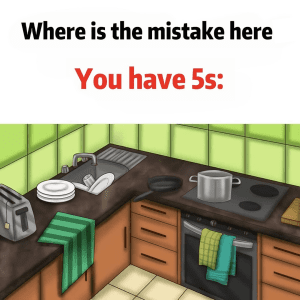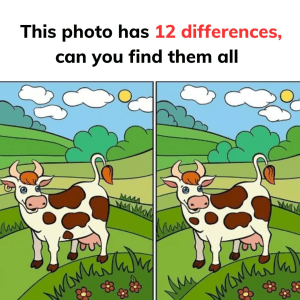Are you ready to put your thinking cap on and test your mathematical skills with a fun and intriguing puzzle? Today’s challenge is bound to make you scratch your head. Let’s see how sharp your logic really is! Here’s the puzzle:

Sounds easy, right? Or is it? Take a moment to think through the problem before jumping to conclusions. There’s a pattern here—can you figure it out? Let’s dive in!
Many people, when faced with this type of problem, tend to make the same mistakes. One of the biggest errors is assuming the amounts are random or directly related to the animals’ size or common characteristics. Others might rush through the puzzle without paying attention to details or patterns. It’s easy to fall into these traps if you’re not careful, but this puzzle is all about focusing on the hidden connections.
Why does this happen? Often, we’re tempted to find a complex solution where a simpler one would suffice. In puzzles like these, the small details usually hide the key to unlocking the answer. Let’s break it down step by step.
Let’s carefully analyze the information provided:
- A duck is given $9.
- A spider is given $36.
- A bee is given $27.
At first glance, these amounts seem random, but when solving puzzles, it’s crucial to look for patterns. What do all these animals have in common? That’s where the secret lies!
Step 1: Count the Legs
The first clue is in the number of legs each animal has:
- A duck has 2 legs.
- A spider has 8 legs.
- A bee has 6 legs.
The amount of money given isn’t just random—it’s connected to the number of legs each animal has.
Step 2: Calculate How Much Money Each Leg Receives
To solve this, we need to figure out how much money each leg is worth. Let’s look at the math:
- The duck, with 2 legs, gets $9.
- $9 ÷ 2 = $4.50 per leg.
- The spider, with 8 legs, gets $36.
- $36 ÷ 8 = $4.50 per leg.
- The bee, with 6 legs, gets $27.
- $27 ÷ 6 = $4.50 per leg.
So, we now see that each animal receives $4.50 per leg.
Step 3: Apply the Rule to the Cat
Now that we’ve established the pattern—each leg is worth $4.50—we can apply this rule to the cat. How many legs does a cat have?
- A cat has 4 legs.
Since each leg gets $4.50, we multiply:
4 legs × $4.50 = $18.
Therefore, a cat would be given $18.

The key to this puzzle was recognizing the connection between the number of legs and the amount of money. While the initial information might have seemed random, by breaking the problem down into smaller, more manageable pieces, the pattern becomes clear. This is a great example of how math puzzles often use simple, logical principles that are easy to miss if you’re not paying close attention.
Did you solve the puzzle before reading the explanation? If so, congratulations! If not, don’t worry—puzzles like these are designed to challenge your thinking and push you out of your comfort zone. Now that you know how it works, why not try another one?
We’d love to hear from you! Share your answer and thought process in the comments below. Did you guess $18, or were you thrown off by the details? Let’s see how many people got it right!
Solving puzzles like this one is a fantastic way to develop your logic and reasoning skills. Every time you engage with a tricky problem, you’re training your brain to think more critically and creatively. Whether it’s math, logic, or word puzzles, they all have the same goal: to keep your mind sharp and agile.
So, keep challenging yourself! The more you practice, the better you’ll become at spotting patterns, solving problems, and thinking outside the box. Ready for the next brain teaser? Stay tuned for more mind-boggling challenges!


